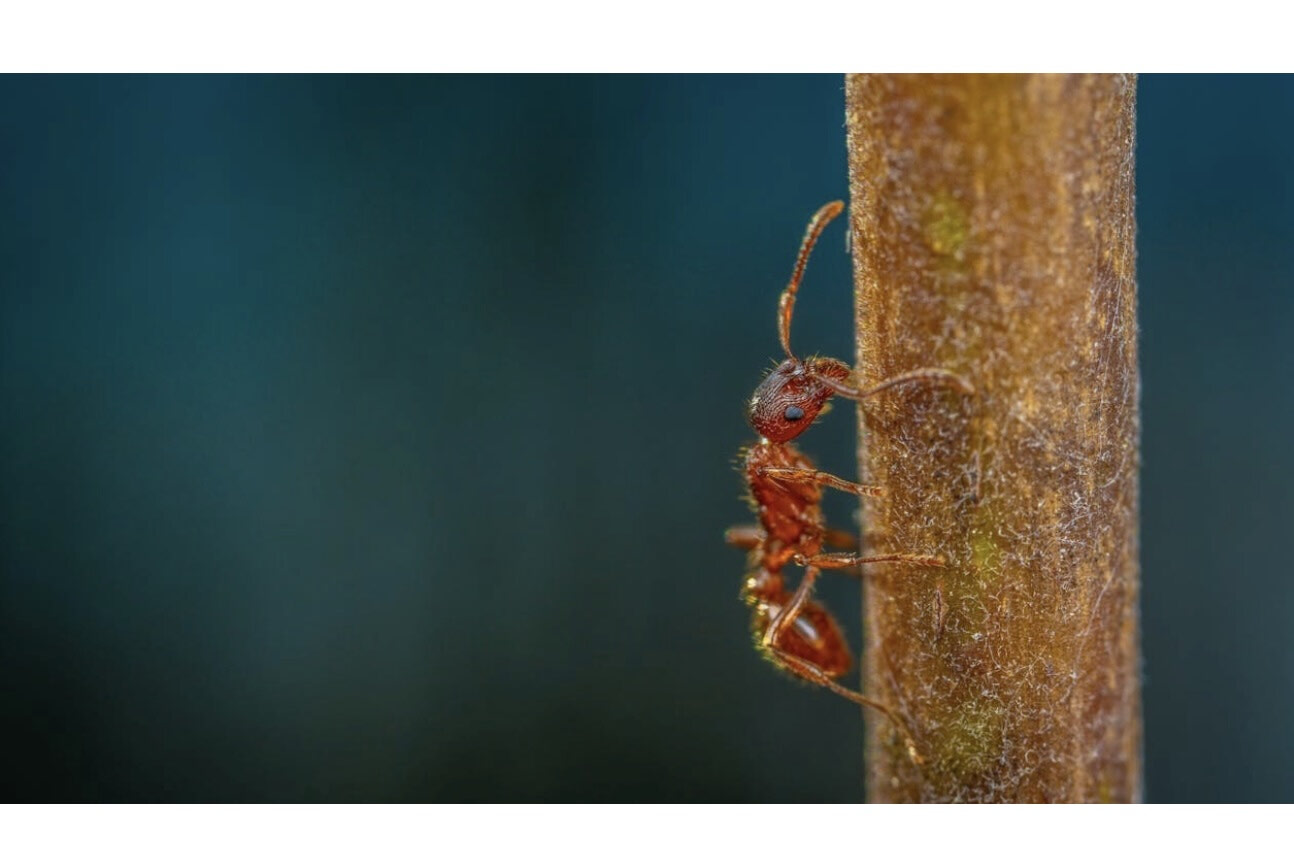Work to wipe out European red ants to come next summer
Taylor Clark
Residents plagued by European fire ants can expect relief come summer 2025 as Gatineau works on a plan to eradicate the fiery red insects.
“If I were flooded, the City would come to my aid and understand. But now we're infested; it's one thing to understand it, to have compassion for it. It's quite another to live through it,” d’Andromède Street resident Marie-Claude Giasson told the Commission de l’environnement et de la lutte aux changements climatiques on June 27.
Giasson first reported European fire ants on her property to the City in 2020 and her family has not been able to enjoy their backyard since.
“Our yards are invested because we are on the edge of city land and the city land behind our house is wooded which encouraged us to purchase the property. But we didn’t know that we would be invested with Myrmica rubra,” she said.
The European fire ant, also known as Myrmica rubra, is an exotic species of ant that appeared in North America in the 20th century and has been gaining ground in Quebec. A polygynous and polydomous species, the ant colonies can have several queens and occupy various nests, all interconnected by underground tunnels. Equipped with a stinger, the species is known for being aggressive and defending its territory.
“When you hear your child scream because he’s just been bitten, the skin reactions that come because that’s what it is, it’s reactions,” said Giasson. With the ability to sting multiple times, the sting of a European fire ant causes burning, itching, and in extremely rare cases, anaphylaxis.
Despite the possibility of a severe, life-threatening allergic reaction, the Direction de santé publique has no guidelines on the European fire ant. It also currently does not appear on an official list of invasive species at the provincial or federal level.
Giasson said she spent a lot of her own money on extermination in the first few years but has since ditched these efforts as swarms continue to infiltrate her property from the wooded area on the other side of her fence.
“I expect the City to help me and my neighbors get back to enjoying our backyards, especially with the summers we're having now.”
The European fire ant was first spotted in Gatineau in 2010 at the Claude-Rioux Park in the Aylmer sector. The first scientific report was released five years later which confirmed their presence. Observations of the fiery red ants resurfaced in 2020 when residents of d’Andromède and du Prado streets reported sightings.
External expertise was recruited to create a detailed mapping of the issue and establish an intervention plan, but the plan was never deployed due to operational constraints and complexities. Wanting to continue the momentum, Gatineau awarded a mandate to an entomologist researcher at the Université de Montréal in 2023 to better understand the colonies plaguing Andromède Park and the surrounding grounds. The research report and its proposed recommendations were presented to the Commission de l’environnement et de la lutte aux changements climatiques at its late June meeting.
The research uncovered around 78 colonies in the area with an estimated population of between 90,000 and 300,000 individual insects. Thriving in shaded, humid environments, the entomologist discovered after several experiments that the ants were weakened at 40 degrees and perished at 45 degrees.
Along with introducing competing colonies and clearcutting greenery to make the environment less conductive, the entomologist recommended installing stripes of black plastic or tiles that would attract sunlight and ultimately put an end to the European fire ants.
With the report now in hand, the Service de la transition écologique will develop a work plan for the fight against Myrmica rubra which is expected to grace council in the fall for approval and to obtain the necessary funding. An awareness campaign targeting citizens would be rolled out in the winter and fall of 2025, with the work to begin that summer.
Photo caption: A report from an entomologist researcher at the Université de Montréal discovered around 78 colonies with an estimated population of between 90,000 and 300,000 individual European fire ants at Andromède Park and the surrounding grounds.
Photo credit: Egor Kamelev on Pexels (stock image site)

